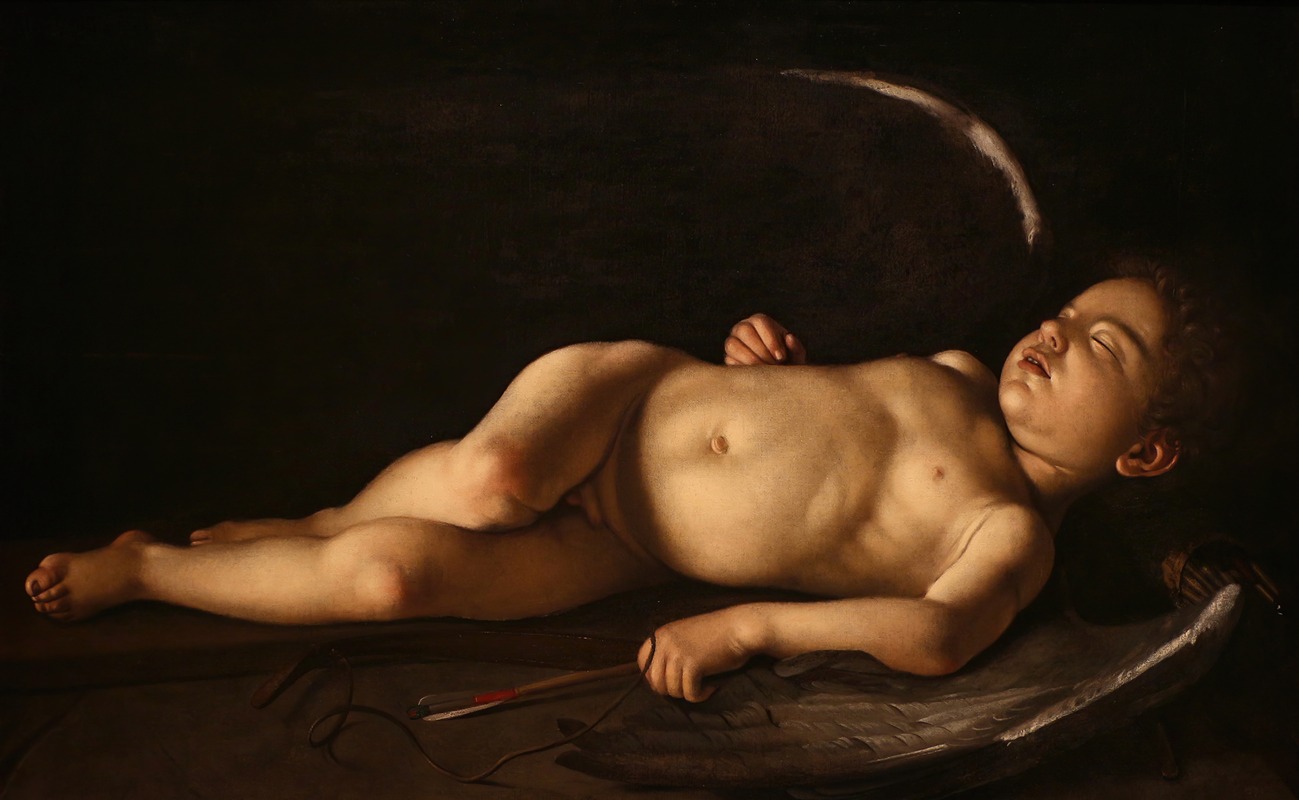
Sleeping Cupid
A hand-painted replica of Caravaggio’s masterpiece Sleeping Cupid, meticulously crafted by professional artists to capture the true essence of the original. Each piece is created with museum-quality canvas and rare mineral pigments, carefully painted by experienced artists with delicate brushstrokes and rich, layered colors to perfectly recreate the texture of the original artwork. Unlike machine-printed reproductions, this hand-painted version brings the painting to life, infused with the artist’s emotions and skill in every stroke. Whether for personal collection or home decoration, it instantly elevates the artistic atmosphere of any space.
"Sleeping Cupid" is a painting by the Italian Baroque master Caravaggio, created around 1608. The work is notable for its depiction of a young, sleeping Cupid, the Roman god of love, rendered with Caravaggio's characteristic realism and dramatic use of light and shadow.
The painting was commissioned by Fra Francesco dell'Antella, a knight of the Order of Saint John, during Caravaggio's stay in Malta. It is believed to have been created during a period when Caravaggio was seeking refuge after fleeing Rome due to legal troubles. The artist's time in Malta was marked by his induction into the Order of Saint John and his subsequent expulsion following a violent altercation.
"Sleeping Cupid" measures approximately 72 cm by 105 cm and is painted in oil on canvas. The composition features a life-sized figure of Cupid, the god of desire, erotic love, attraction, and affection, lying on his side with his wings folded and his bow and arrows set aside. The figure is depicted in a naturalistic manner, with a focus on the physicality and vulnerability of the sleeping child. This approach is typical of Caravaggio's style, which often emphasized the human and earthly aspects of his subjects.
The painting's background is dark and nondescript, which serves to highlight the illuminated figure of Cupid. The use of chiaroscuro, a technique that contrasts light and dark to create a sense of volume and three-dimensionality, is evident in this work. Caravaggio's mastery of this technique contributes to the lifelike quality of the figure and the overall dramatic effect of the painting.
"Sleeping Cupid" is housed in the Palazzo Pitti in Florence, Italy. It is part of the collection of the Galleria Palatina, which holds a significant number of works from the Renaissance and Baroque periods. The painting is an important example of Caravaggio's work during his time in Malta and reflects his continued exploration of themes related to classical mythology and human emotion.
The painting has been the subject of various interpretations, with some scholars suggesting that it represents the vulnerability of love or the transient nature of beauty and desire. However, these interpretations remain speculative, and the true intent behind the work is known only to Caravaggio himself.
In summary, "Sleeping Cupid" by Caravaggio is a masterful representation of the Baroque artist's skill in rendering human figures with realism and emotional depth. The painting's dramatic use of light and shadow, combined with its classical subject matter, makes it a significant work within Caravaggio's oeuvre and a notable piece within the collection of the Galleria Palatina.


















